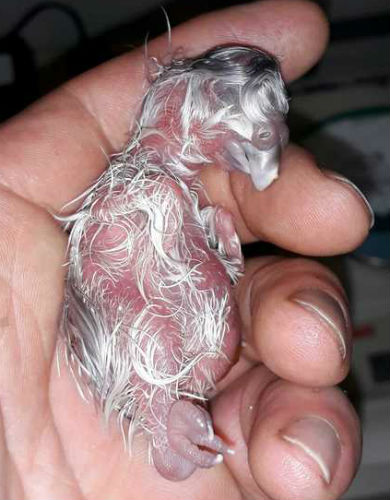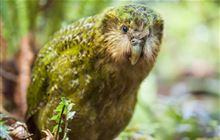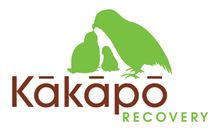First new kākāpō chicks hatch
Archived content: This media release was accurate on the date of publication.
Introduction
The first kākāpō chicks of the season have hatched, heralding the start of what’s hoped to be the biggest boost to the critically endangered population on record.Date: 01 February 2019

Weighing a healthy 28 grams the first chick – temporarily named Waikawa - 2 - A - 2019 – is from kākāpō Waikawa’s first nest of the season.
Image: DOC
Two chicks, weighing a healthy 28 and 32 grams respectively, have hatched in the past two days, with more expected this week.
DOC kākāpō operations manager Deidre Vercoe says 2019 is predicted to be the biggest kākāpō breeding season on record with almost every breeding-age female expected to lay eggs.
“So far, things have got off to a great start with the birds mating earlier than expected resulting in a record 136 eggs to date.
“Unfortunately, fertility has been particularly poor this year, potentially due to the number of young males breeding for the first time. Less than half of these eggs will hatch into a kākāpō chick, and not every hatched chick will make it to adulthood.
“However, we’re still hoping for anywhere between 30 to 50 chicks. With a population of 147 adults, this will be a huge boost for this taonga.”
Due to the birds beginning breeding so early, the team are moving eggs and chicks will be hand-reared in an effort to encourage “double clutching” – meaning they could nest twice in one season.
DOC’s Kākāpō Recovery Programme, with the support of Ngāi Tahu, has been working on innovative new approaches to improve the breeding success of the critically endangered kākāpō. Two such projects are “Smart Eggs” and an Assisted Breeding programme.
“Both projects, funded by our national partner Meridian Energy, are experimental in nature, but both also have the potential to dramatically increase the success of kākāpō breeding.”
Assisted Breeding is essentially a helping hand for kākāpō to ensure they’re getting the most out of the breeding season. It involves semen collection, sperm analysis and artificial insemination.
“This is part of our efforts to ensure that all founders are genetically represented, and also to increase fertility, since multiple matings greatly increases the likelihood that a female will have fertile eggs. AB allows us to replicate this with females who don’t chose to mate multiple times themselves.” AB efforts will focus mainly on any second clutches.
Smart Eggs are 3D printed eggs that mimic the sounds that would come from a real kākāpō egg just prior to hatching, which helps kākāpō mums better prepare for the arrival of their chick, thus improving the care they get in those critical first days.
“DOC has developed these two approaches working with others. Both innovations have been made possible with help of National Partner Meridian Energy whom are backing these new innovations by funding the projects. DOC have also worked with The International Centre of Birds of Prey (ICBP) to develop Smart Eggs and individual experts in Assisted Breeding.”
Contact
For media enquiries contact:
Email: media@doc.govt.nz


